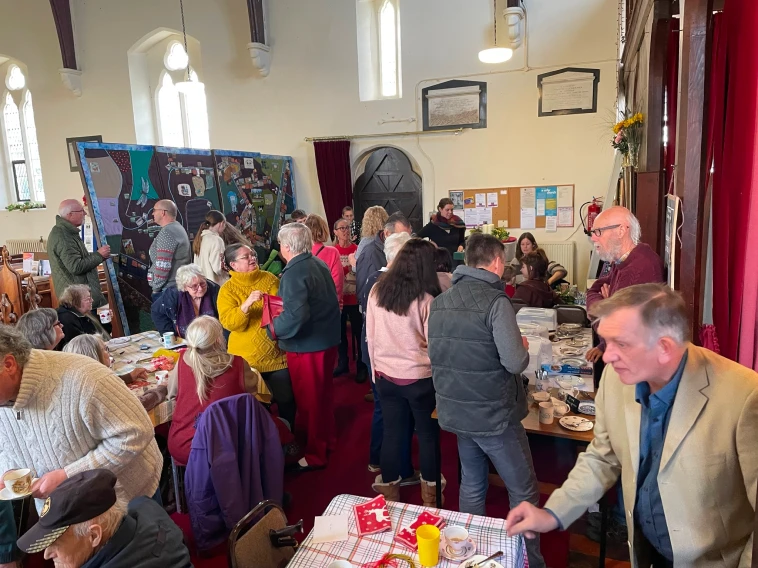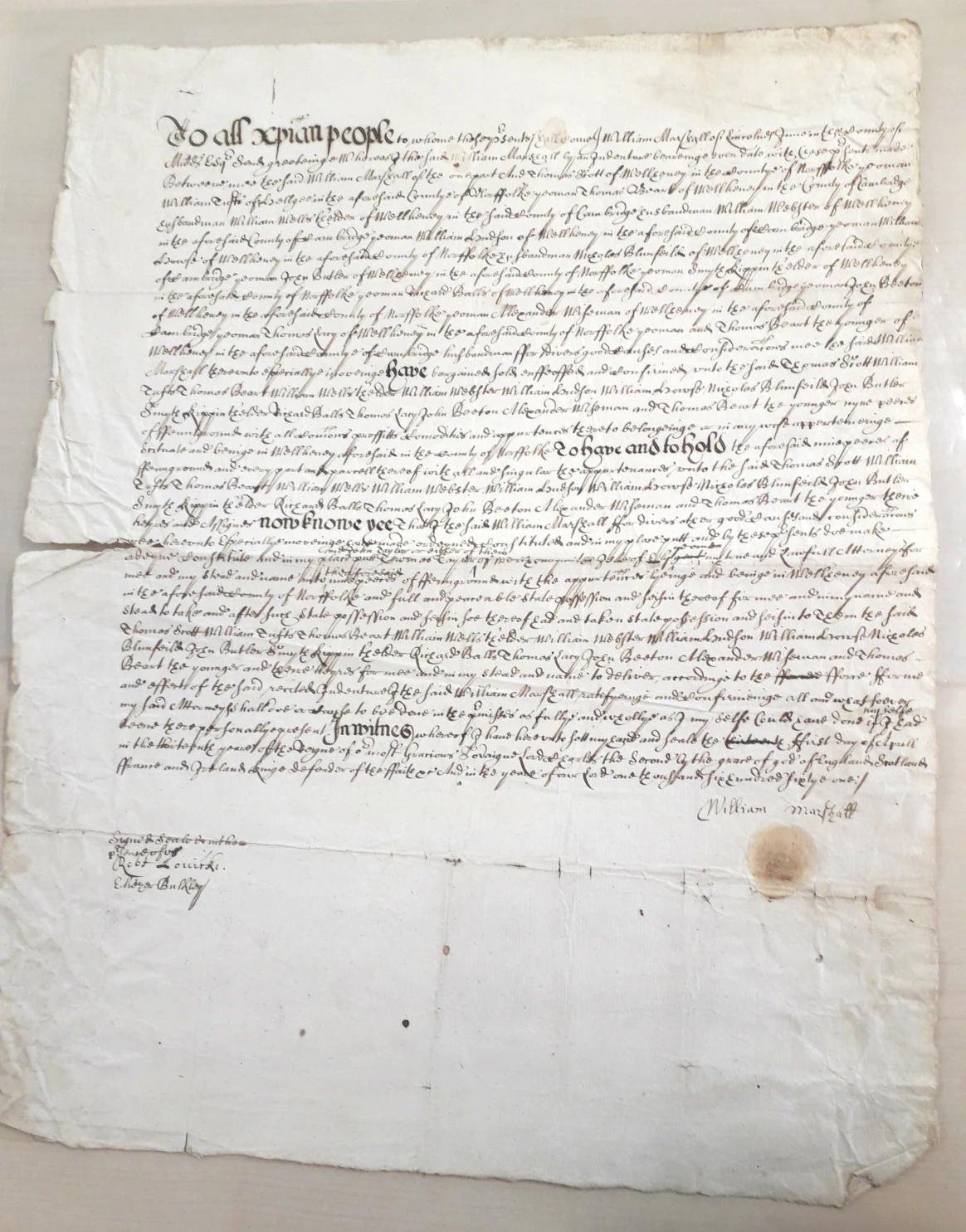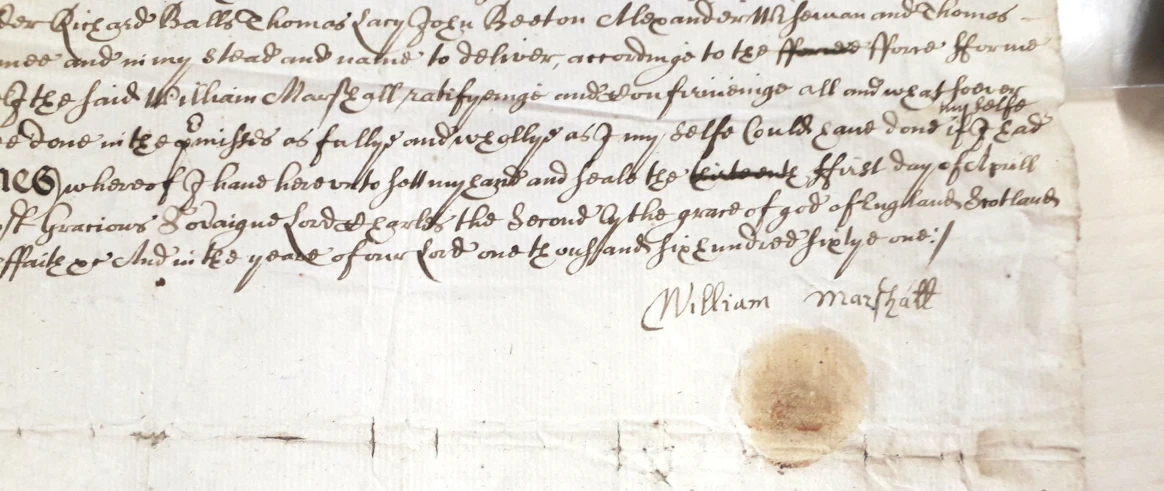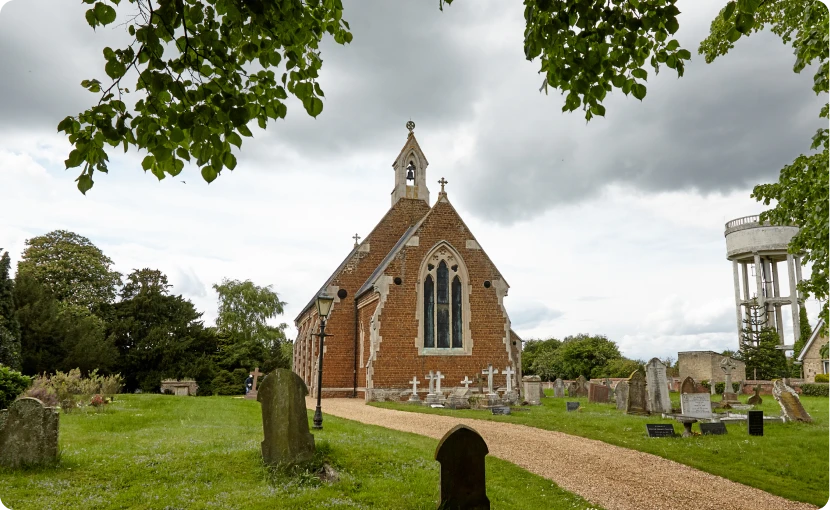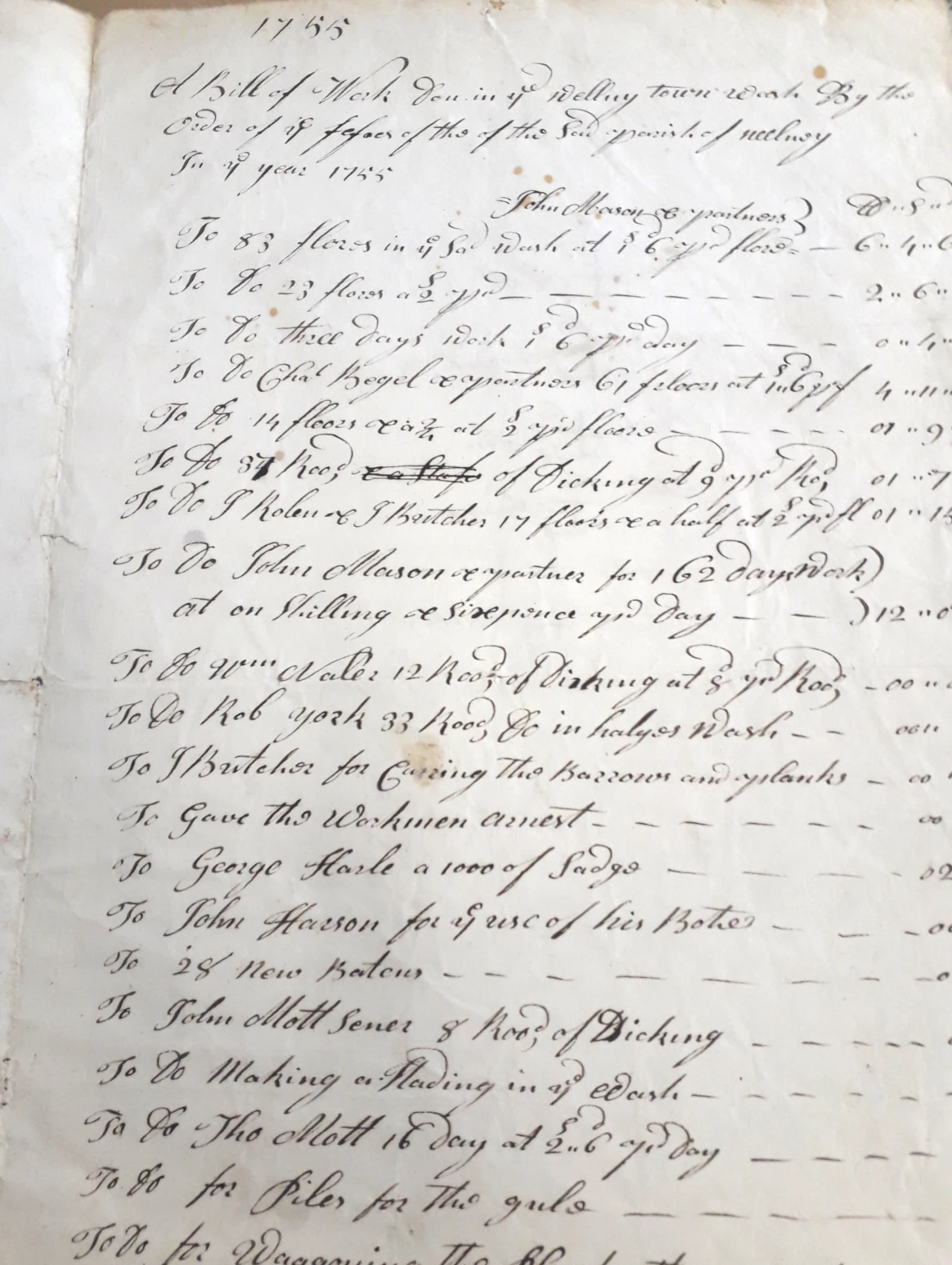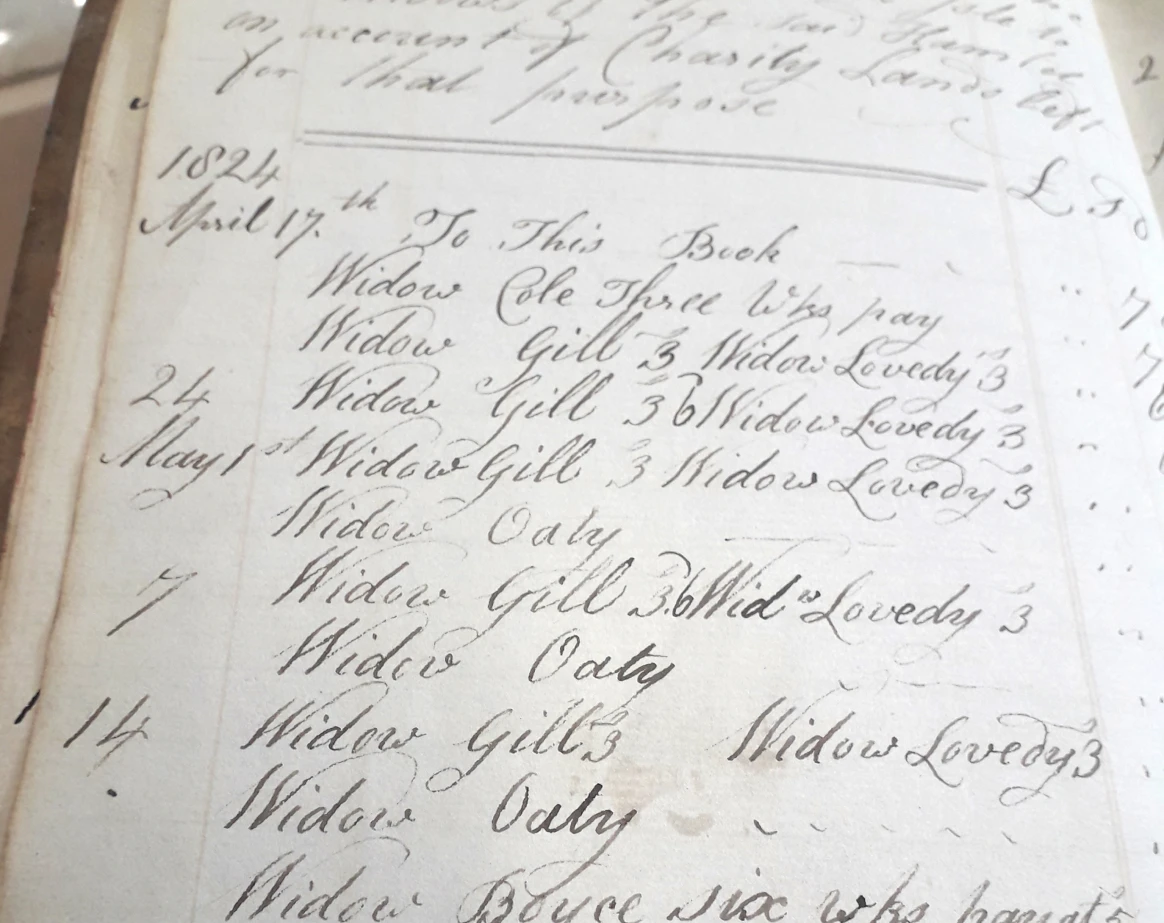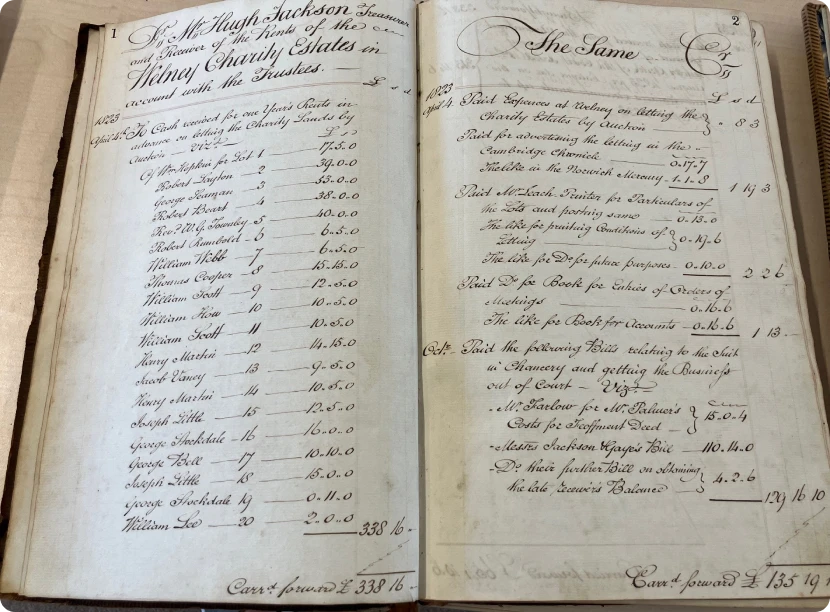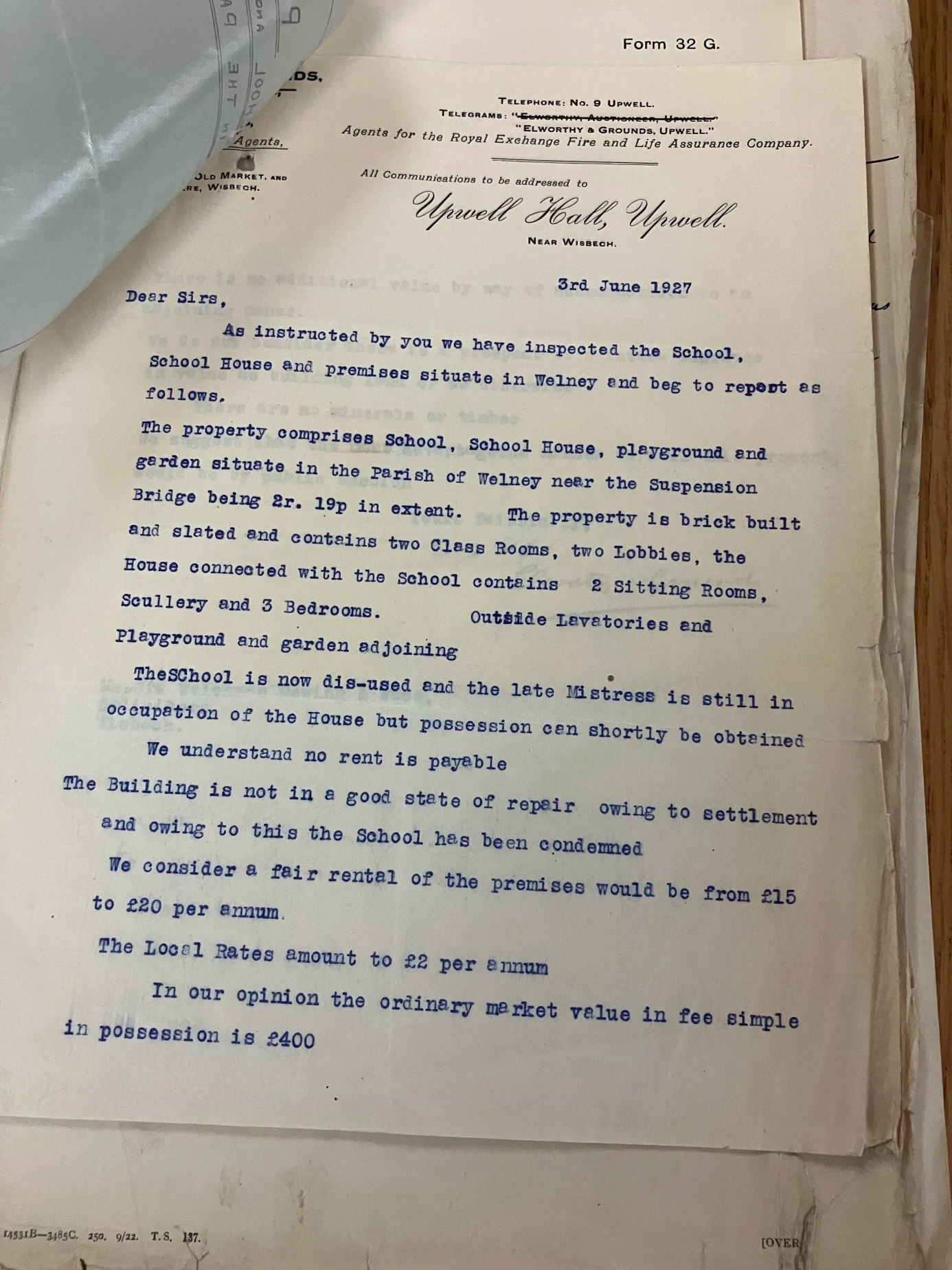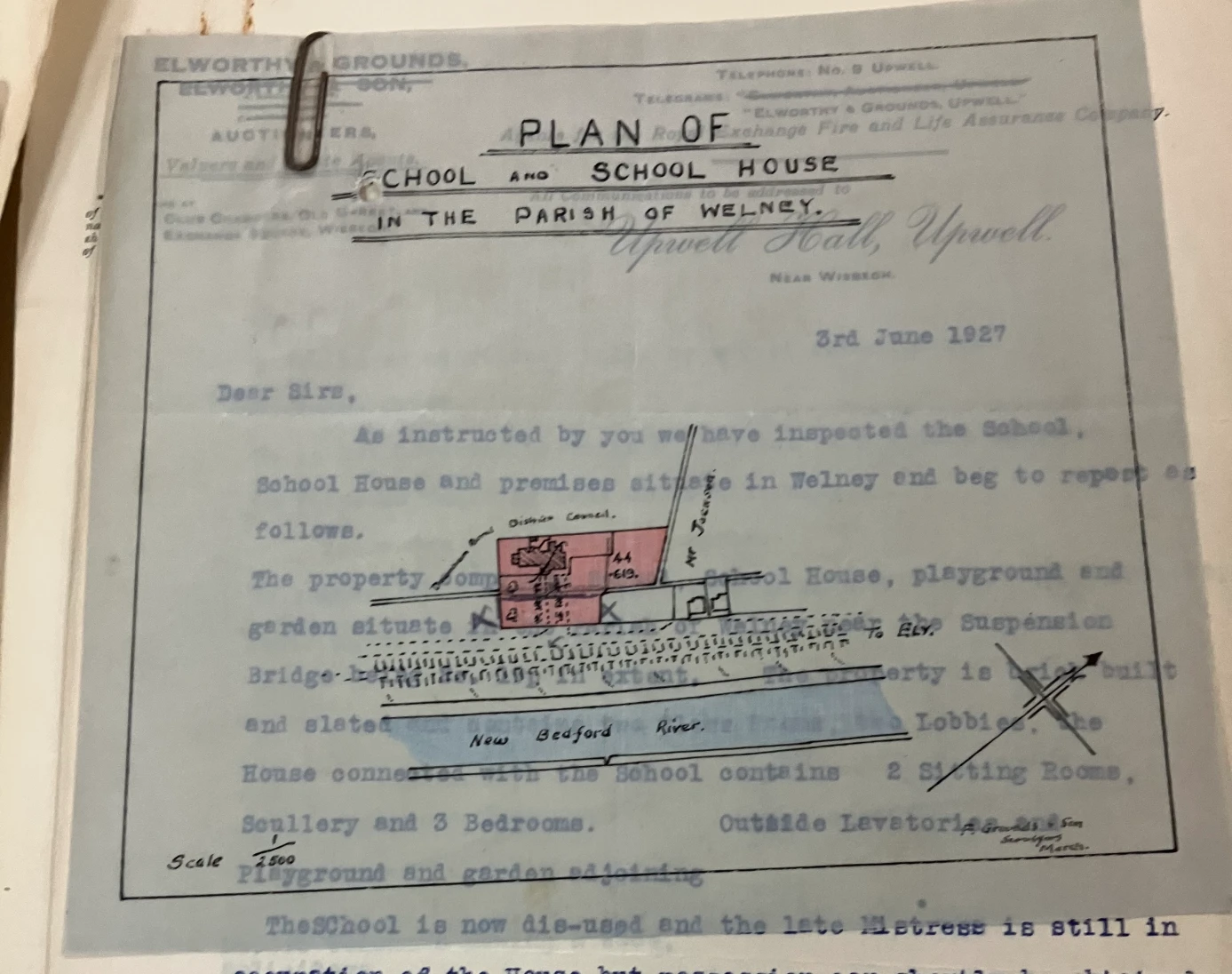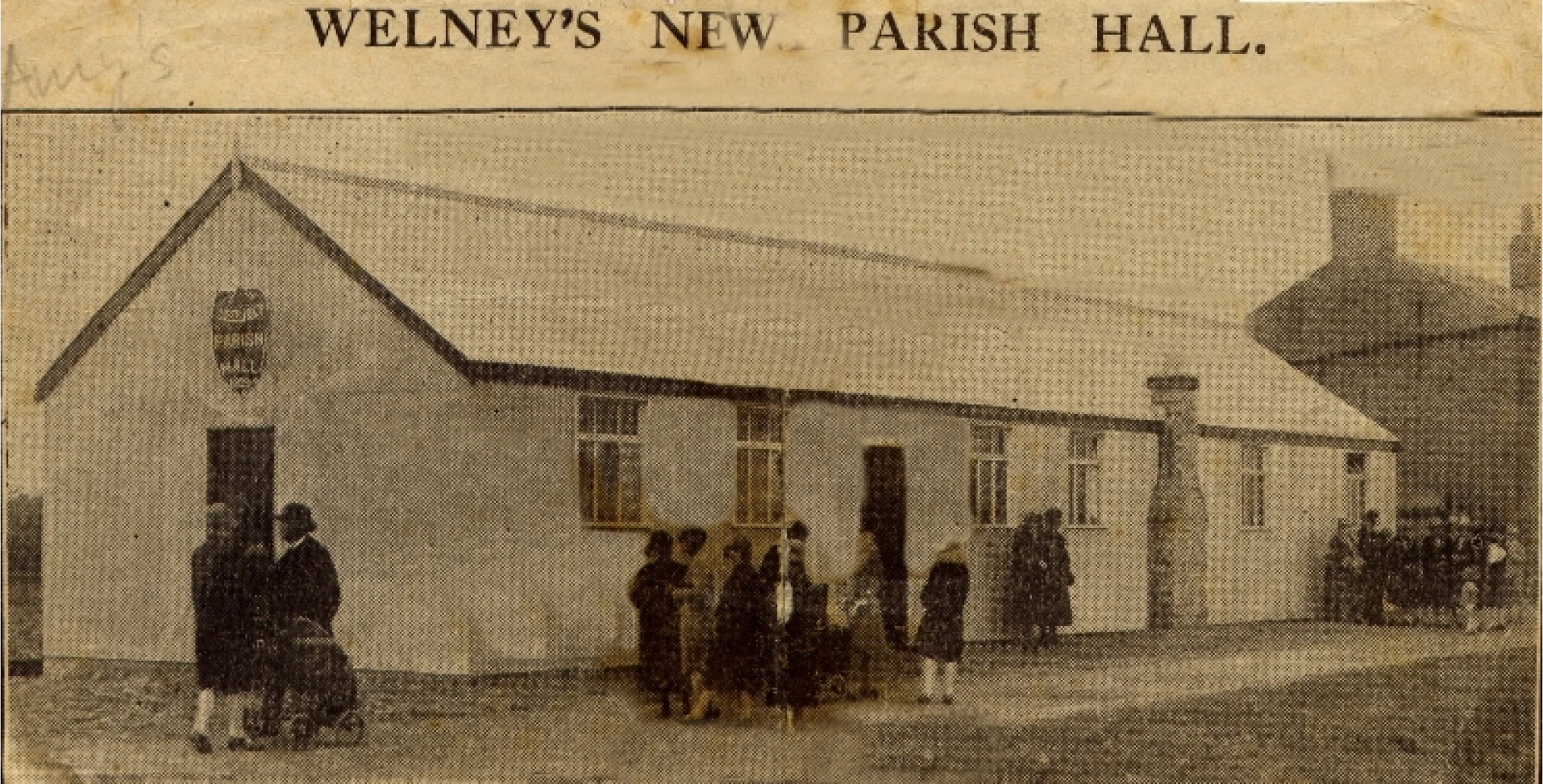On top of this the charity also paid property tax for its land and allotments, school, church and alms houses.
Widows were paid monthly relief which totalled annually £105 and 61 shillings on the Isle side of Welney and £99 9 shillings on the Norfolk side.
For the school:
School master salaries paid to I Sharman of £67 4 shillings and 8 pence and Henry Godlington £62 pounds, 18 shillings and 8 pence.
A monitor, coals, trademsns bills for repairs, purchase of desks and bibles, cost of clearning the school.
Insurance for the Mission House School and church organ.
A donation to George Scott of £5 due to the loss of 30 of his sheep
Stamps, postage and the salary of the treasure to record and account for the income of the charity.
Payments by tenants of the land and allotments were listed individually and payment was taken on specific times of the year – Whitsun, Michelmas, Christmas, Midsommer and Lady Day.
A new scheme in 1906 for the charity made a change to allocate two thirds of the funds to the school and the remaining third to the poor of the village as the school population had grown to 163 pupils.
By 1907, the accounts show that the charitable contributions were split between specific accounts Church, Apprentices, Widows, School buildings and the William Marshall Education Foundation had been set up working with school managers from the county education committee., two thirds of the income was used on providing schools and education services for Welney and West Welney.
By 1912, there were grants to Welney Village Hall, repairs to almshouses, a third paid to widows monthly through the church and the Trust was using Wisbech Savings Bank and Barclays Bank for holding funds. The growing area of Welney and the development of local government to manage wider districts are shown through the accounts as payments were made to the Urban District Councils for infrastructure, transport and payment for utilities to the Waterboard for the school and church.
The Mission School closed in 1927 when its 43 pupils were transferred to Marshall’s School in the Village Then later in 1939 the Marshall school was closed and children moved to Upwell school only for them to be move back again in the 1930s.
The accounts are documented up to 1976 in this way with much of the regular rent collection, use of land and support of the schools, church, almshouses annually and contributions to playing fields and the parish hall with new trustees working for the charity and in later years, Littleport Parish Council providing the services of a clerk. The administration of the William Marshall Voluntary aided school continued until 2015 as part of Norfolk County Council education services when it closed due to low numbers of pupils – places for children were taken up at Upwell School instead. The school was sold now being used as a private residence in the village.
